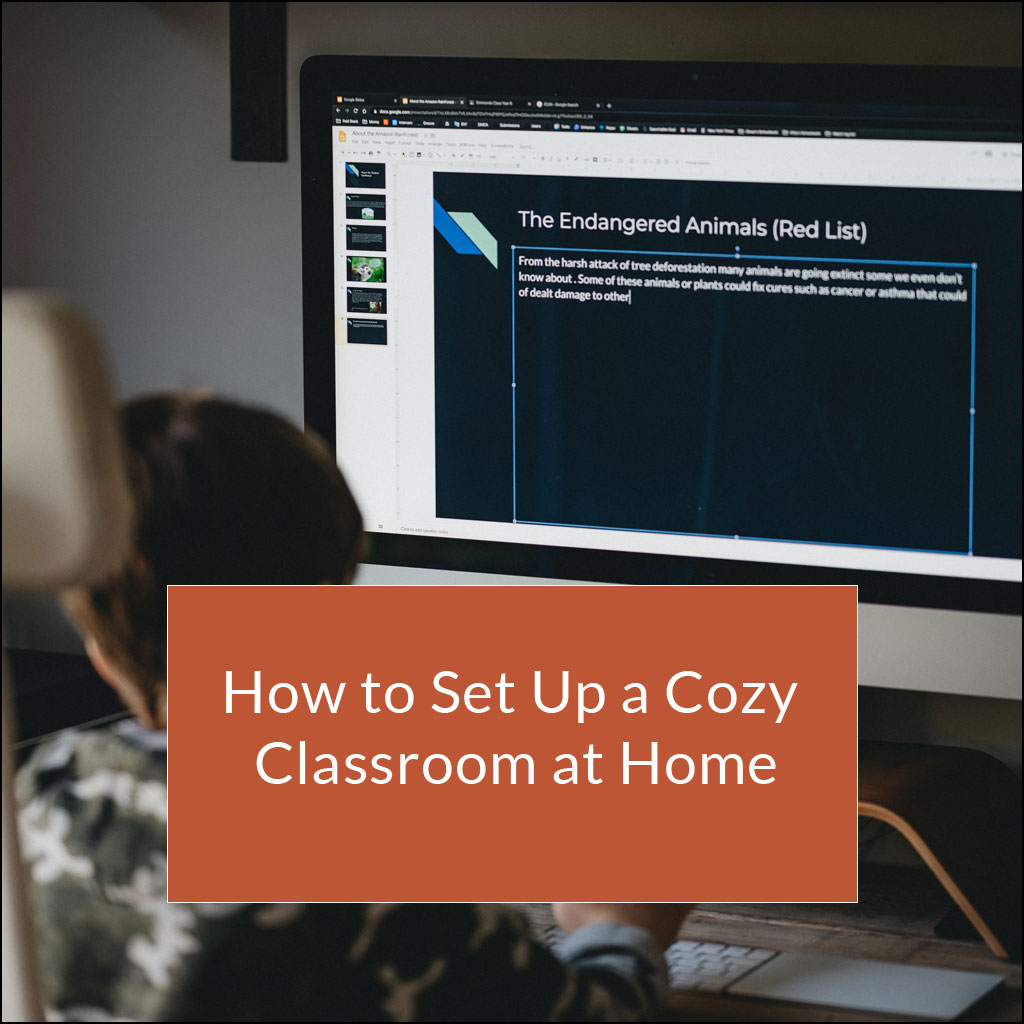
How to Set Up a Cozy Classroom at Home
Are you one of the many parents or guardians around the country getting to grips with homeschooling? First things first, we’d like to say that we salute you! The challenges of the past year have been immense thanks to the introduction of distancing measures and quarantine rules. Adding the stress of homeschooling and remote working into the mix is a recipe for tension and anxiety.
Fortunately, it is possible to combat stress while boosting your kid’s at-home education by making tweaks to their working environment. Whether you conduct all the teaching by yourself, share the responsibility with a partner, or have outside help from a tutor, creating a space that feels welcoming, safe and free from distractions will help to enhance your kid’s academic performance over the coming weeks and months.
How hygge will help you set up a cozy home classroom
Hygge is a well-being and lifestyle trend designed to make living spaces feel homier and more welcoming. While the concept has traditionally been used for sprucing up living rooms, bedrooms, or other relaxing spaces, there has never been a better time to create a hygge home classroom.
As well as combating restlessness and procrastination, bringing this popular trend to the classroom may help to boost your kid’s mental health. The COVID-19 pandemic has been hard on everyone, including young people. The following tips and trick could help to brighten up their lives while they’re unable to play with friends and do normal ‘kid things’.
Find a designated workspace
Switching your kid’s workspace from the lounge to the kitchen to their bedroom over the course of a few days could increase their anxiety and leave them more prone to distraction. Homeschooled young people tend to feel safer and more able to concentrate when they can work in their own special classroom, so seek out a part of the home you don’t often use. This could be a corner of the kitchen, a spare bedroom, a playroom, or a conservatory – just make sure it doesn’t experience high levels of distracting foot traffic from other members of your household throughout the day. Other factors to think about could include:
- Lighting: Hygge lighting should be natural, warm and inviting. Try to find a space where the light is bright enough for reading and completing schoolwork but not so bright as to be overbearing or stressful. Hanging some fairy lights could be a smart idea if you’re struggling to find the right balance.
- Warmth: Some areas of your home may be cooler than others. Try to find a space that stays warm but doesn’t easily overheat. Hot kids could get sleepy!
- Work surfaces: You need to find a place with a flat, stable floor and decent work surfaces to ensure that your kids can read and write without any issues. Wobbly tables can be super distracting for restless young people, particularly if you’re working on something difficult like math or literacy.
Invest in some home comforts
Comfortable seating is a must for any home classroom. If you don’t own decent desk chairs or stools, you may want to invest in some new seating to see you through the ongoing situation. They don’t have to be expensive – just remember to make them a little more hygge by adding cushions, throws, and anything else to make the classroom area in your home feel more cozy and less distracting.
Declutter the Learning Area
Decluttering is key if you want your home classroom to feel inspiring and motivating. After all, if books, pens, toys, and papers are scattered around the space, your child will be tempted to play with the items rather than get on with studying. As most hygge enthusiasts would attest, an orderly room is one of the best ways to feel calm, content, and focused.
An effective method for tidying up your home and ensuring it stays clutter-free is to include plenty of storage space in your kid’s workroom. This could include anything from desk drawers to rolling carts. Labelling these items with signs such as ‘pens’, ‘books’, or ‘paintbrushes’ will encourage your kid to clean up after themselves and maintain an orderly classroom environment.
It will also help to emulate the school environment they’re accustomed to.
Set up separate workstations
If your home is big enough, why not set up separate workstations for individual subjects? You could set up stations for arts and crafts, reading, and working out, for example. Dividing the room in this way will help to keep your kid’s mind active while retaining a sense of routine and order.
Drink out of mugs
Nothing feels cozier than drinking a mug of something warm during the working day, so buy a few cute mugs to use in the designated classroom area. Make sure these mugs are used only in this area to keep them special.
Kids will love them!
Hang your kid’s work on the wall
Hanging your kid’s artwork, poetry, or exemplary schoolwork on the wall is a great way to motivate them to reach their potential. It will remind them of their successes on a regular basis, as well as adding a spot of color to the room. Remember to show off their work to any visitors to your home – your kid will love the attention!
What to do if you have more than one child
So far, we’ve mainly included advice about how to set up your classroom for a single child. If you’re homeschooling more than one kid, the principles are largely the same, but try to give them space to spread out and work independently of each other from time to time.
Although it may seem like more of a challenge to teach multiple kids at one time, it may be a blessing in disguise. After all, kids who can spend time with their siblings may feel a stronger sense of family togetherness and, therefore, a better sense of well-being.
Just make sure you keep the bonds strong by including lots of time for relaxation and play!
And finally… try to relax
It goes without saying that a stressed-out family can actively harm a child’s academic progress. Students are sensitive to the emotions of their loved ones, so work on building strong bonds and maintaining a healthy routine above all else.
If you find yourself getting upset over the particulars of your child’s homeschooling space, take a step back, make a cup of delicious hot cocoa, and take a breather.
Hygge is all about wellbeing, after all! Remember that even small changes could positively impact your kid’s learning experience during turbulent times.
Trust us, you’re doing a great job!
Photo by Annie Spratt on Unsplash




